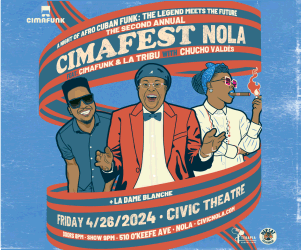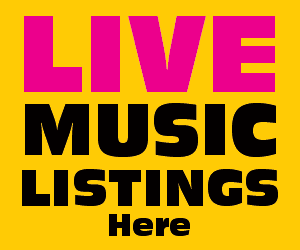Imagine how we rejoiced when we found out today that the city of New Orleans was going into a “Modified Phase Three” of requirements to keep people safe during the pandemic. Howie Kaplan, owner of the The Howlin’ Wolf, announced there would be a socially-distanced concert there once the guidelines allowed opening post-March 12.
This means that restaurants, cafes, coffee shops, bars, nightclubs and microbreweries can now operate at 75 percent capacity, assuming socially-distanced tables, ticketing and the like.
But wait.
The Louisiana Fire Marshal’s office has guidelines that might make live music performances indoors in a lot of venues impossible (or too expensive to implement) for a fairly long time to come. Here’s the problem: according to the Louisiana Fire Marshal’s guidelines, the venue’s HVAC system must provide a minimum of six air changes (ACH) within the space occupied by the audience and performers. Documentation has to be available to verify that the HVAC system complies. Few, if any venues have this HVAC capacity. There’s more (and we quote):
Each venue music provide at least one of the following additional mitigation measures if singing and/or wind instruments are included in performance:
- Direct air flow towards the performers/stage and away from the attendees at a minimum rate of 2,000 CFM. (A fan that meets the standard listed above is acceptable).
- An independent HVAC system, dedicated exclusively for the performance area, that provides a minimum of 6 air changes per hour (ACH). 3.
- Use of a physical barrier, like Plexiglas, in front of sources of high-velocity aerosols including singers and musicians playing wind instruments.The further the barrier is placed from the source, the larger it shall be.
- Require singers to wear well-fitted masks, which allow for proper vowel formation [??] while keeping the mouth and nose covered, throughout the entire performance. Require wind instrument performers to wear masks with slits at the mouth to fit mouthpieces for playing their instruments only.
- Face shields should not be used in place of a face mask. Face shields are eye protection and should be worn in combination with a face mask.
- Wind instrument bell covers should be used in all settings (Ideally, bell covers should be made of non-stretchy material that has a Minimum Efficiency Reporting Value (MERV) of 13).
- A minimum 20 feet of separation shall be provided between the performers and attendees.
- Use of a physical barrier, like Plexiglas, in front of sources of high-velocity aerosols including singers and musicians playing wind instruments would allow this distance to reduce to 10 feet
- The performance area should not be above attendees (e.g. indoor balconies)
- Distancing of 6X6 feet is suggested for all performers; 9X6 feet for wind instrument players.
- Mark spaces on the floor where performers and stands will be placed.
- Pre-set chairs and stands when possible.
- At all other times when not playing, the performers should wear a well-fitted mask that covers nose and mouth.
- Performers must not share music stands, sheet music, instruments or microphones.
- The performance area and materials such as stands and microphones should be sanitized after each performance.
- Training and proper PPE must be provided to those who are responsible for cleaning.
- Water bottles must not be shared. Performers shall bring their own water bottles.
- Signage must be posted indicating that singing and instrumental music produced by wind instruments are thought to be higher risk activities for COVID-19 spread. Older adults and people with certain medical conditions are at increased risk to become severely ill from COVID[1] It is especially important for people at increased risk of severe illness from COVID-19, and those who live with them, to protect themselves from getting COVID-19.
So music lovers, we’re not out of the woods yet, not by any means. I’m concerned that once we’ve passed the point of combating COVID, bars, restaurants and venues with music may still have to comply with these rigorous and these potentially costly measures from the Louisiana Fire Marshal’s office. Are those restrictions going to be loosened as of March 12? I really wonder how many restaurants, bars and venues have or can afford to install an HVAC system that meets these requirements?
How can they afford to install this system, especially now when no one has any business? Catch-22.




